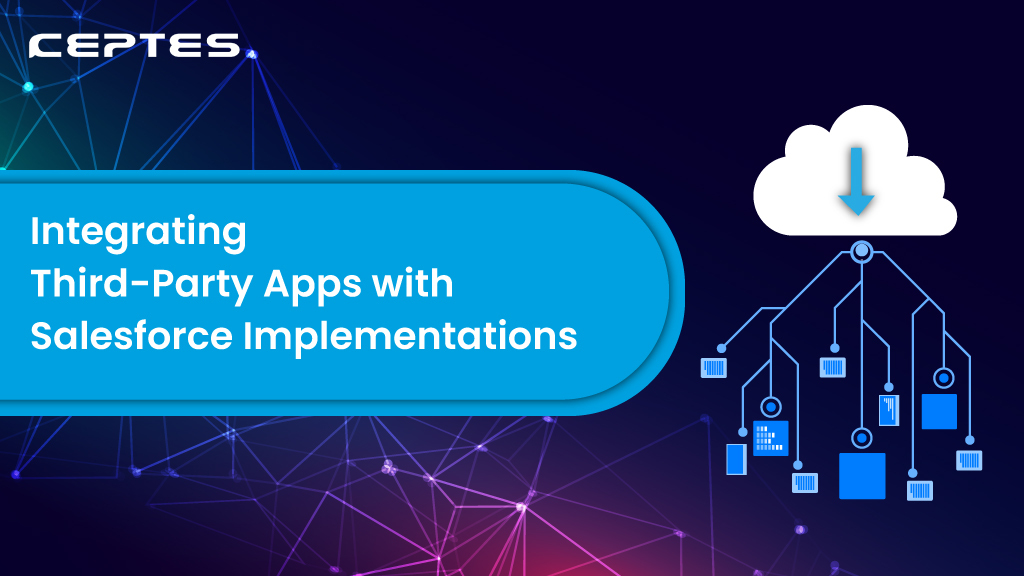The success of a technology hinges on delivering a smooth user experience. However, it’s challenging to predict the ideal system or its effectiveness for your business. To achieve a successful Salesforce integration with third-party applications, you must always follow the best practices.
Best Salesforce Integration Practices You Must Follow
Assess business requirements: Evaluate your specific needs before starting the integration process. Identifying issues in your business models helps efficiently integrate third-party applications with Salesforce.
Engage and update your team: Involve your team in the integration process to avoid confusion. Keep them informed and seek their feedback to ensure satisfaction with the integrated applications.
Monitor competitors: Monitor competitors closely to drive innovation. Analyze their integrated applications, learn from their mistakes, and improve the efficiency and accuracy of your Salesforce integration process.
Select appropriate integration type: Understand different integration types and their impact on your business. Data integration syncs data seamlessly, while business logic integration creates robust applications. Consider hiring a Salesforce developer for guidance.
Evaluate product details: Thoroughly analyze the product before integration. Integration is time-consuming and costly, so ensure the product aligns with your business requirements, incorporates favorable terms and conditions, and adds value.
Follow these practices to optimize Salesforce integration with third-party applications, providing a seamless user experience and achieving your business goals.
Exploring Salesforce Integration Tools – A Tool Overview
To achieve a successful Salesforce integration, it is crucial to leverage the right tools. These tools can be categorized into three main groups:
Salesforce Native Tools
Salesforce provides native tools designed specifically for seamless integration. Two notable examples are AppExchange and MuleSoft Anypoint Platform. AppExchange serves as a cloud marketplace that automatically recommends compatible software for Salesforce integration. Meanwhile, MuleSoft streamlines the integration process for third-party software that may not initially be compatible with Salesforce.
App-Native Tools
One of Salesforce’s major strengths lies in its support for independent application developers and organizations to embed Salesforce integration capabilities into their tools. This includes popular options like Google Cloud, Mailchimp, Dropbox, Slack, Outlook, DocuSign, QuickBooks, HubSpot, and more. These tools enable easy integration without the need for coding or complex configurations.
Third-Party Tools
When the options mentioned above are not suitable, third-party tools come into play. Utilizing these tools requires expert knowledge and effort to integrate third-party applications with Salesforce. However, the market offers a wide range of choices, allowing organizations to select tools that best fit their specific needs.
By exploring and utilizing these diverse Salesforce integration tools, organizations can streamline their integration processes and enhance their overall Salesforce experience.
Exploring Popular Salesforce Integration Tools
Having gained insights into Salesforce integration with third-party applications, let’s now delve into some widely used tools that can facilitate successful integration for your organization.
Actiondesk
This no-code tool enables users to access crucial organizational data and apply structural logic to it, allowing for the creation of customized views and reports. With its Lookup function, users can gather, merge, and update data from multiple sources effortlessly.
Boomi AtomSphere
Used for integration between on-premises environments, SaaS apps, and cloud-based solutions, Boomi AtomSphere offers a clean and intuitive visual interface for application integration. Additionally, Boomi Atom can be used to deploy integrated solutions to any location.
Blendo
Focused on connecting cloud applications with databases, Blendo provides a user-friendly interface to establish connections with MS SQL Server, Amazon Redshift, and PostgreSQL. It enables users to retrieve historical data and integrate it into their environment seamlessly.
Commercial
Recognized for its exceptional Salesforce-ERP system integration capabilities, Commercial, in combination with its SYNC application, enables real-time synchronization and automation. The integration process is straightforward, as it doesn’t require mapping skills, coding, or server access.
Jitterbit Harmony
This tool simplifies the end-to-end integration lifecycle management. Supporting on-premises, cloud, and hybrid environments, Jitterbit Harmony offers API transformation capabilities. With pre-built templates and drag-and-drop configuration options, integration becomes incredibly easy.
By exploring these popular Salesforce integration tools, organizations can streamline their integration processes and enhance their overall operational efficiency.
Salesforce WhatsApp Integration
Salesforce WhatsApp integration is a free open-source library named Yowsup, available on GitHub. This Python code allows registration, sending, and receiving messages. Here are key features:
- Registration: Before diving into the code, you must register using yowsup-cli and an actual SIM card with WhatsApp. Obtain a request code with the specified Python code, including the mobile number, country code, MCC, and MNC codes.
- Generating Password: After receiving an SMS with a code in the format “YYY-YYY,” use the provided Python code to generate the password for further use.
- Sending and Receiving Messages: With the password obtained, utilize the Python client code to send and receive WhatsApp messages.
Additionally, Salesforce WhatsApp integration can be achieved with the assistance of Twilio as a service provider.
Salesforce LinkedIn Integration
To integrate Salesforce with LinkedIn, Professional, Enterprise, Unlimited, Developer, or Performance editions of Salesforce are required. This integration streamlines sales activities, captures processes in Salesforce, and optimizes the sales process. Benefits include effective lead generation, reduced lead generation costs, and maximized innovation.
Bottom Line
Integrating third-party apps with Salesforce implementations requires adherence to best practices to ensure a smooth user experience and maximize the effectiveness of the technology for your business. CEPTES with integration tools like no-code 200 OK has made the integrations smoother and less technical.
Reach out to us to know more about these tools and Salesforce integrations!





















